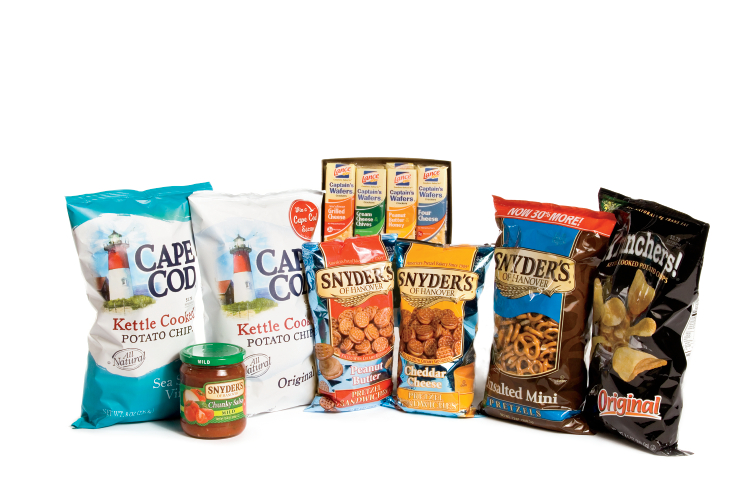Home > Georgia > Georgia Environment > Gallons of Sustainability in Georgia
Gallons of Sustainability in Georgia
Like Georgia’s farmers, the state’s food processors are turning eco-friendly for business.
“We live here, we operate here, we see ourselves as stewards of our community’s resources,” says Chuck Staton, director of operations at Snyder’s-Lance in Columbus. “We are working toward a day in which no section of waste from this facility ends up in a landfill.”
In 2005, Lance acquired the original Tom’s Foods plant and began facility upgrades. When Snyder’s of Hanover and Lance, Inc. announced a “merger of equals” in the summer of 2010, it created a national industry leader for snack foods, with a broad product portfolio including iconic pretzel, sandwich cracker and potato chip brands.
Since that merger, production at the Columbus plant has increased to some 70 million pounds annually.
“Our existing wastewater operation wouldn’t support the increase in volume,” Staton says.
So Snyder’s-Lance invested $1.5 million in a new wastewater treatment system.
“I’m proud to say that we’ve had no issues with water quality since the new system went online in late 2012,” says Chad Burns, the plant’s environmental health and safety manager. Full-time wastewater operators oversee a Dissolved Air Flotation System that skims effluents from wastewater.
“All our wastewater has met the guidelines from Columbus Water Works for pH and oil and grease content,” Burns says.
The system can treat far more than the weekly load of 4,000 to 7,000 gallons of wastewater. “Our holding tank is 99,000 gallons,” Burns says. “We wanted to position ourselves for long-term growth for water treatment that keeps us being stewards in the community.”
The plant also creates steam for its boilers by incinerating peanut hulls. Hulls from 12,000 tons of peanuts currently produce steam, says Harry Broughton, peanut and candy plant manager. “Now, we’re using more peanuts from farmers in Georgia, Florida and Alabama, but our needs for steam are not increasing much. So we’re looking for ways to use our extra hulls,” he says. Hulls not used by the plant are hauled away to be processed for animal feed.
The Columbus plant plans to continue to look for better ways to be a good environmental steward.
“Here in Columbus, Tom Huston started out with a product connected to Georgia agriculture in 1925,” Staton says. “We are dependent on agriculture for our main ingredients of flour and peanuts, and we will keep looking for ways to be good stewards of the resources in our community.”




